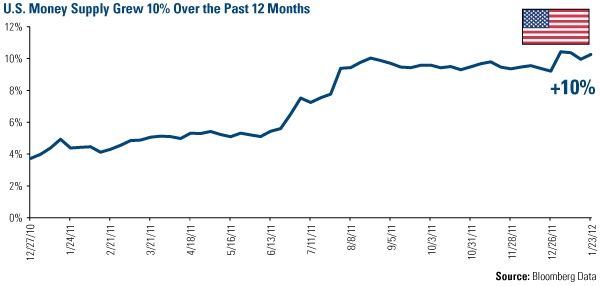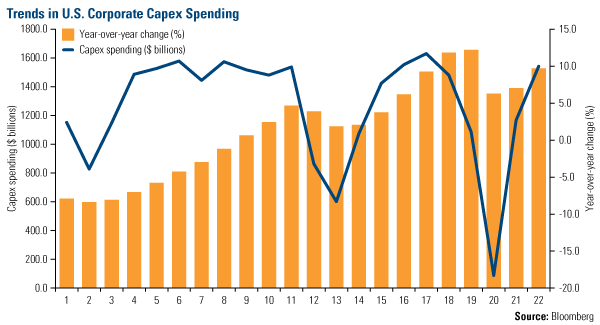The Economy and Bond Market Radar (February 6, 2012)
Employment data released on Friday, which put the current unemployment rate at 8.3 percent, showed strong improvement. This is the latest in a series of data points that show the U.S. economy is continuing to make strides in the right direction. ISI Group says that this was the 18th straight week of stronger economic data in the U.S. We’ve recently seen upticks in vehicle sales, same store sales, homebuilding and manufacturing.
Manufacturing PMI rose during the fourth quarter of 2011 and ISI Group thinks that it will rise another 3 percent to the 54 level during the first quarter of 2012. ISI says that over the past two years employment in the manufacturing sector has posted its strongest increase in almost three decades. But it’s not just the U.S. Manufacturing PMI on the rise, data from Europe and China also exceeded most forecasts and global PMI has jumped considerably since November.
One other factor that is likely driving better economic results is the year-over-year increase in U.S. money supply, which is growing at a robust 10 percent pace. Nominal GDP growth in the fourth quarter was 3.7 percent compared with the previous year and the current rate of money supply growth greases the wheels for America’s economic engine. Adequate money supply is the lubricant that allows the wheels of commerce to accelerate.

An article in the Wall Street Journal this week highlighted that in 2011 U.S. corporate tax receipts as a share of profits were at their lowest level in at least 40 years. Corporations paid a tax rate of 12.1 percent on profits during the fiscal year that ended September 30, 2011, less than half the average rate companies paid from 1987 to 2008. Those figures grabbed a lot of headlines in the press, but they don’t tell the whole story. In addition to putting aside more than $2 trillion in cash over the past five years, many corporations have employed a tax incentive known as “bonus depreciation” that allows companies to deduct from their taxes the capital that they invest back into their businesses.

The incentive has worked. Capital expenditures for American companies reached $1.5 trillion in 2011, up 10 percent from 2010. We believe this increase in capex has been a significant driver of the U.S. economic recovery. Corporate purchases of new fleet vehicles, machinery and data systems have created and maintained thousands of jobs for American citizens. It is unlikely the U.S. government would have achieved the same return on investment and multiplier effect on the economy.
Strengths
- The January employment report was much better than expected, with the strongest job gains since April and the lowest unemployment rate since February 2009.
- The ISM manufacturing index rose to 54.1 and the new orders component rose to a strong 57.6. JP Morgan’s Global PMI Index also continued to move higher, hitting 51.2 in January.
- U.S. auto sales rose 12 percent in January supporting the uptick seen in manufacturing data.
Weaknesses
- The Case-Shiller 20-city home price index hit the lowest level since February 2003. Prices have fallen 3.7 percent year-over-year.
- Consumer confidence fell sharply to 61.1 in January; expectations were for an increase.
- Fourth quarter productivity rose a very modest 0.7 percent.
Opportunities
- If the weekly oscillating trading pattern over the past couple of months is any indication of market direction, bonds could see a modest sell-off next week.
Threats
- Economic data has been strong and appears to be gaining momentum. This could be a threat to bond prices if the pattern continues.











